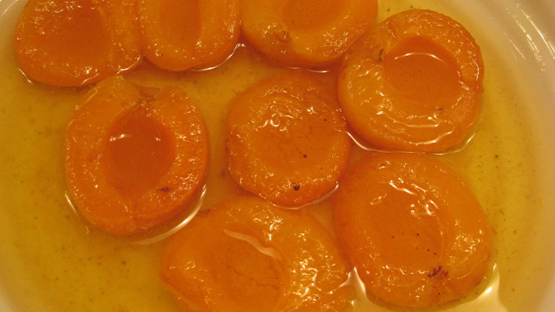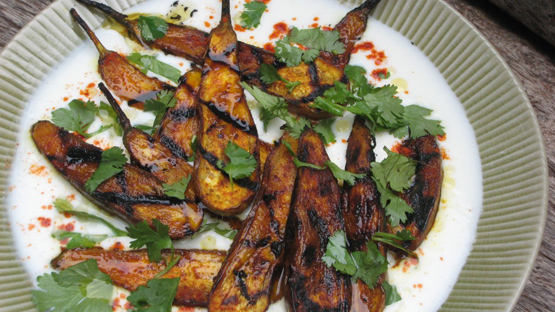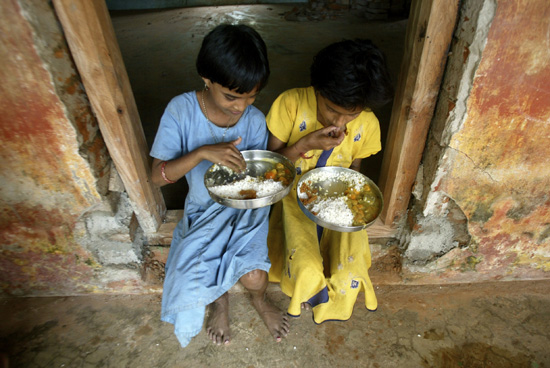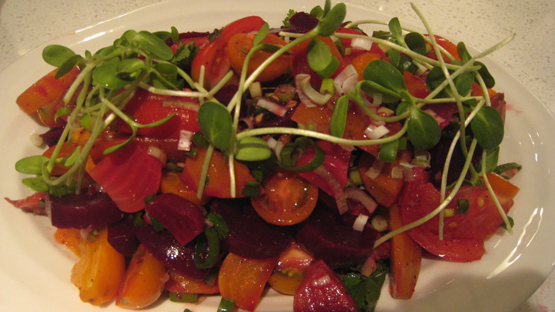In the fall of 2008 I travelled from Delhi to Turin, Italy to participate in Terra Madre, Slow Food’s conference that happens every few years and brings together food artisans, activists and many others concerned about safeguarding and promoting all aspects of food cultures from around the world. There I met some of the Slow Food Canada contingent, one of them being Lulu Cohen-Farnell of Real Food for Real Kids (check them out as they are doing great work with school lunches in Toronto). She told me about an article that she had recently read about a group of monks in India feeding schoolchildren in different states throughout India. Upon my return I found the article online and read that the foundation was called Akshaya Patra and it originated and was associated with the ISKCON temple in Bangalore. I was unable to visit any of their cooking centres until a few years later on a trip to the city of Puri, in the eastern state of Orissa. Here is an article, with a photo slideshow, I wrote about their school lunch program for the online website Zester Daily.
Category Archives: India
Beet Tomato Salad, Fenugreek Chicken Curry and Kashmiri Style Poached Apricots
This week throughout the world various religious celebrations have brought family and friends together: Muslims celebrating Eid and Hindus worshipping the elephant God Lord Ganesh with the festival Ganesha Chaturthi. Although I do not practice either religion I still felt it necessary to get some old and new friends together for a celebration.
A slight chill in the air has arrived indicating soon summer will abruptly end. But there is still much work and harvesting to be done in the farmer’s fields. Ripe heirloom tomatoes, multi-coloured beets, fragrant golden apricots and an organic chicken shaped the menu with my friends: a beet, tomato, cumin salad; fenugreek chicken curry; and poached apricots scented with cardamom and saffron.
- 1 lb. beets (small or medium sized are preferred)
- 1 lb. tomatoes
- ½ tsp cumin seeds, toasted and ground
- 3 spring onions, finely chopped
- ½ cup fenugreek sprouts or micro green sprouts such as radish or sunflower
- ¼ cup coriander, roughly chopped
- Juice of 1 lemon
- Salt and pepper, to taste

- 1 kg boneless chicken thighs (breast can also be used)
- 1 ½ cups diced onion
- 3 tbsp ginger, finely chopped
- 3 tbsp garlic, finely chopped
- 8 green cayenne chillies, slit lengthwise
- 1 box (25 grams) dried fenugreek (kasoori methi)
- 6 tbsp vegetable oil
- 1 cinnamon stick
- 5 whole cloves
- 5 green cardamoms
- 1 bay leaf
- ½ to 1 tsp cayenne powder
- 1 tsp coriander powder
- 1 tsp cumin powder
- ½ tsp turmeric powder
- 1 cup diced tomatoes (if using canned, do not add liquid from can)
- 1 cup yogurt
- ½ to 1 cup water
- Salt, to taste (approx. 1 ½ tsp)
- For Garnish:
- A generous pinch of garam masala
- 2 tbsp ginger, julienned
- ¼ cup coriander, roughly chopped

- 1 pound fresh apricots (or 18-21 dried apricots)
- 3 cups water
- ¾ cup sugar
- 10 green cardamom pods
- Pinch of saffron
- 1 tbsp lemon juice (optional)
NOTE: This was originally posted on my blog India On My Plate September 02, 2011
Grilled Smoky Eggplant and threat of GM Eggplant in India
 Last Sunday strolling through the Landsdowne Farmer’s Market I happened upon a stall selling some gorgeous tiny pear-shaped organic eggplant, about 3 inches high, variegated with white and deep purple. Unfortunately the young vendor was unsure of the variety name and provenance. The day before I had just made some eggplant pickle, which these would have been perfect for, but I already had an idea of what I was going to prepare.
Last Sunday strolling through the Landsdowne Farmer’s Market I happened upon a stall selling some gorgeous tiny pear-shaped organic eggplant, about 3 inches high, variegated with white and deep purple. Unfortunately the young vendor was unsure of the variety name and provenance. The day before I had just made some eggplant pickle, which these would have been perfect for, but I already had an idea of what I was going to prepare.
Tuesday night’s meal was bittersweet. My wife was happy to see this dish on our table that night as it is a favourite of hers. Unfortunately, the same cannot be said about what possibly could be soon served on thalis throughout India. Earlier that day, under the chairmanship of the Indian Prime Minister Manmohan Singh, the BRAI bill (Biotechnology Regulatory Authority of India) was approved and is expected to be tabled in the current session of Parliament. Under the proposed bill the Federal government will hold the power to override any State-level acts and regulations with respect to GMOs throughout the country. The bill can clear any GM foods, despite the concerns raised against them.
Such a bill threatens food safety, the environment and the right to choose what one eats. Just last year, when genetically modified eggplant was initially approved by the Indian parliament as part of the US-India Agricultural Knowledge Initiative farmers, State governments, GM activists, and ordinary citizens raised concerns that its introduction would lead to an increase in monoculture and a decrease in eggplant varieties. The Indian government was forced to place a temporary moratorium on the GM eggplant. However now it seems that they prefer not to listen to their citizens, the very ones who elected them.
Why should you be concerned about this, not living in India? India is the world’s largest producer of brinjal/ aubergine/ eggplant in the world growing more than 4,000 varieties. Local farmers often choose a variety that meets their regional needs and preferences and is best suited to their specific local ecosystems. Recent history has demonstrated that when governments give larger corporations such power in agriculture there is not only a decrease in plant variety but also the small farmer and consumer are the ones who directly end up feeling the negative effects. India’s infrastructure is not yet as well planned as, say China’s. But it will be. Come that day, in this globalised world, these GM eggplants will eventually make it to North American and European supermarkets. You can make your voice heard by signing a petition which asks the Indian government to stop the passing of this bill.
Thanks for your patience. Now, on to the cooking.
- 1 large eggplant or 2 Japanese eggplant (or similar amount of small eggplants)
- 1 tbsp mustard seed oil (or Indian sesame oil or vegetable oil)
- ½ tsp turmeric powder
- ½ tsp smoky Spanish paprika (or ¼ tsp paprika and ¼ tsp cayenne powder)
- ¾ cup plain yogurt
- 3 tbsp lemon juice
- 1 tsp sugar
- Salt and pepper, to taste
- 3 tbsp coriander, roughly chopped
- 1-2 tsp browned ghee or butter (optional)
- pinch of cayenne powder (optional)
NOTE: This was originally posted on my blog India On My Plate on August 18, 2011.
Tamarind Chutney
Also known as tamarind chutney or saunth this tart, spicy and slightly sweet sauce is an essential ingredient to spoon over various street chaats or to serve as a dipping sauce for pakoras or samosas. The tamarind sauce will keep refrigerated for several weeks in a well sealed glass jar.
- 7 oz tamarind block
- 2 cups hot water
- 5 tablespoons jaggery (or brown sugar)
- 1 ½ teaspoons ground ginger
- 1 teaspoon cumin, roasted then ground
- ½ teaspoon fennel seeds, roasted then ground
- ¾ teaspoon cayenne powder
- ¼ teaspoon black pepper
- 2 ½ teaspoon salt
NOTE: This was originally posted on my blog India On My Plate on August 12, 2011
Green Coriander and Mint Chutney
- 2 cups coriander leaves
- 1 cup mint leaves
- ½ cup medium onion, diced
- ½ cup tomatoes or 1 Roma tomato, diced
- Juice of 1 lemon
- 2 teaspoons sugar
- 3 green chillies, seeded chopped
- Salt to taste
- 4-6 tablespoons water
- ½-1 teaspoon chaat masala (optional)
NOTE: This was originally posted on my blog India On My Plate on August 12, 2011


